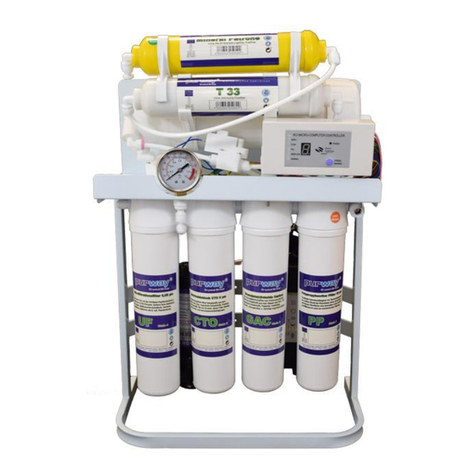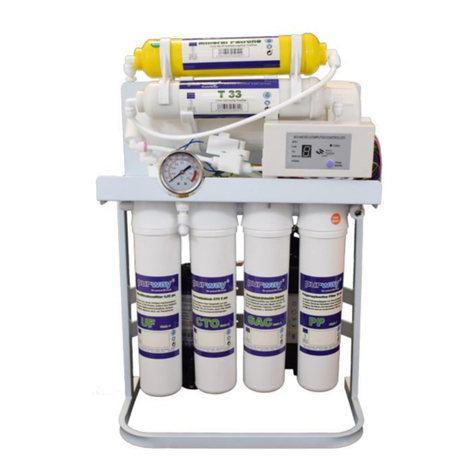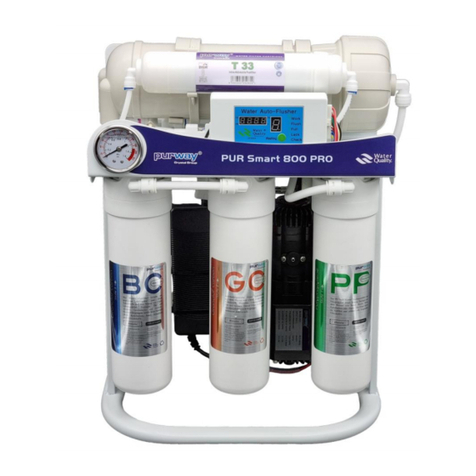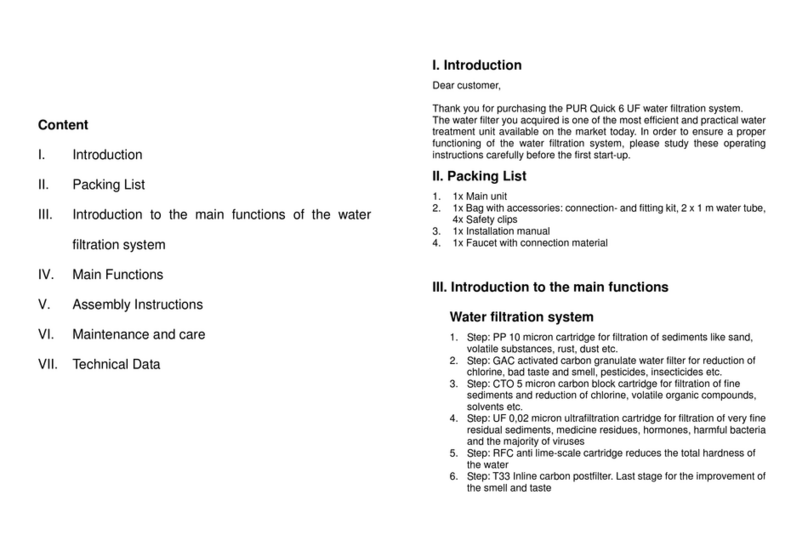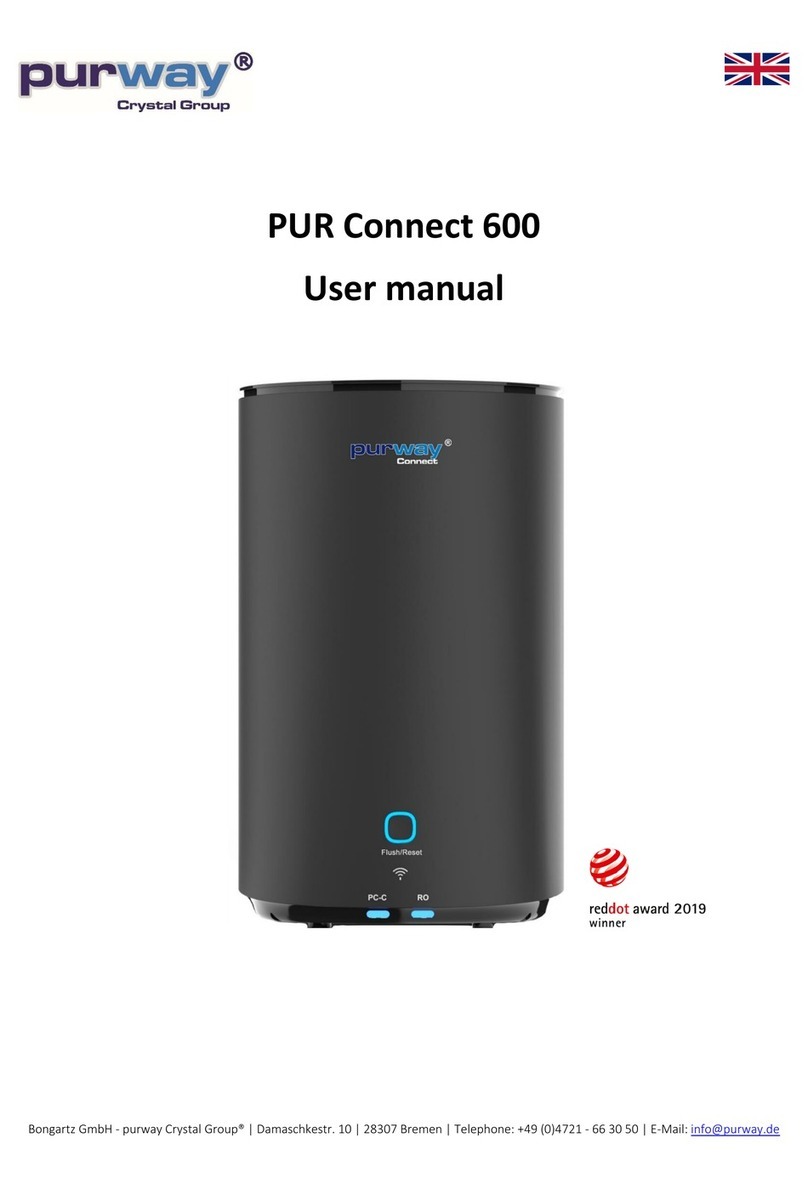
4. Open the water tap and check if pure water is coming out. If not, check that the water pressure if it is
maybe too low.
5. Wait for the device to start working. Close the inlet water ball valve and check to see if the device turns
off. If this is the case, please check the low voltage switch for functioning and change it if necessary.
After a short overall inspection, the device can now be safely put back into operation.
Disclaimer:
1. To prevent microbial contamination on the membrane components during storage and transport, the
membrane was coated with a non-toxic protection solution and the post-active coal filter with active coal
powder. Therefore, let the first liters run off and do not use them as drinking water. After that, the
produced water can be used safely.
2. When the device is put into operation, the TDS value of the water may be slightly elevated. After a short
period of time, this value drops again and stabilizes.
3. During operation, the water-inlet ball valve and tap should be open. If you do not currently need pure
water, close the water tap, then the high-pressure switch automatically switches off the water supply.
4. These usage instructions only apply if the device is connected to the current and/or the water-inlet ball
valve is open and the device is in operation.
Maintenance and care:
Filter change cycle:
1. The cycle to replace the different filter cartridges is derived from average statistical indicators for
conductive water. If there are greater differences between the actual water quality of the user and its
utilization rate and the average indication, there will also be deviations from the specified lifetime of the
filters and the exchange cycle. The cycle should then be adjusted accordingly.
2. The estimated filter change cycle is based on average household water consumption. This device is not
designed for large water consumption, such as for the industry.
3. According to the economic statistics for municipal conductive water, a normal family household with three
persons requires about 10 litres of water per day. Depending on the water quality and the water flow, the
lifespan oft he filter cartridges is as follows (serves only as a reference):
1st stage: PP10 melt blown sediment filter
approx. 3.000 - 4.000 litres
2nd stage: GC10 activated carbon granular filter
approx. 3.000 - 4.000 litres
3rd stage: BC10 activated carbon block filter
approx. 3.000 - 4.000 litres
4th stage: RO osmosis membrane
5th stage: T33 postfilter activated carbon
NOTE: The filter change should be carried out by a professional.
Water quality has a large influence on the life span of the filters, as well as the life span of the membrane is
influenced by numerous factors.
The table above only indicates average values under standard conditions. Depending on water quality and
temperature, the lifespan may vary upwards or downwards
